We used to take our water for granted.
We rarely think about where it came from, or what it may have in it.
Then bottled water came on the scene. At first, it was a nice convenience, and a healthy alternative to sugar-sweetened beverages. But then there was all that plastic clogging up our oceans and other waterways, say nothing of our landfills.
Better to drink tap, we all thought.
So we went back to our faucets, but then we heard stories of the contamination. Back in the 1980s, perfluorooctanoic acid (PFOA) from the DuPont plant (Teflon) contaminated drinking water in Ohio and West Virginia.
Decades later, in 2015, the same chemical popped up in Hoosick Falls, New York, and several other nearby areas in the Northeast, spurring the EPA to issue a new, lower level recommendation for PFOA.
Then there was the astounding recent case of contaminated water in Flint, Michigan, where after the state decided to switch the source of their supply from Lake Huron to the Flint River, between 6,000 and 12,000 children were exposed to drinking water with high levels of lead.
It’s enough to confuse even the least eco-conscious individual, who care about their own health, but also want to do what’s best for the planet.
Where do we go for our water? What’s the best choice?
What’s Really in that Bottled Water?
You already know that bottled water is contributing to environmental waste, but you may not know the details:
- Bottles take over 1,000 years to biodegrade. If they’re incinerated instead, they produce toxic fumes.
- Only one out of five water bottles are recycled.
- U.S. landfills are overflowing with 2 million tons of discarded water bottles.
- It takes three times the volume of water to manufacture one bottle than it does to fill it.
- We use 17 million barrels of oil each year to produce water bottles.
- Every square mile of the ocean has over 46,000 pieces of plastic floating in it.
But let’s put aside all the environmental problems for a minute. Is bottled water better for you? In other words, is it less toxic than tap water?
In many cases, no. According to the Natural Resources Defense Council (NRDC), an estimated 25 percent or more of bottled water is really just tap water in a bottle, sometimes further treated, but sometimes not.
The NRDC conducted their own tests on water bottles, and found that of the 1,000 bottles they tested (about 22%) contained chemicals above state health limits in at least one sample. They also found that samples of two brands were contaminated with phthalates—toxic plasticizing chemicals linked to asthma, hormone disruption, diabetes, and other health issues.
You’d think that government regulation would help reduce the risks, but the problem is that two different organizations regulate tap and bottled water. The EPA regulates tap, but the Food and Drug Administration (FDA) regulations bottled. That means that while tap water has to be disinfected, filtered to remove pathogens, and tested for viruses, bottled water doesn’t have to be.
City water is also tested more frequently than bottled water. Manufacturing plants have to test for bacteria just once a week—city tap has to be tested 100 or more times a month.
And don’t think you can get around these issues by buying a certain type of bottled water. The EPA notes that labels can be confusing.
- Spring water: May be collected where water flows to the earth’s surface, or from a borehole that taps into the underground source.
- Glacier water: Not regulated and may not indicate where the water is from.
- Mountain water: Also not regulated.
- Purified: Not necessarily free of microbes—just indicates that it was treated to remove chemicals and pathogens.
They add that bottled water can come from a ground water source, just like tap water, or from surface water source, like a river or stream. Most comes from groundwater, which is generally safer, but some comes from the public water system and just receives additional treatment before its bottled.
What about the bottle itself? Some studies have found that toxic phthalates can leach from the bottle into the water over time. One study, for example, found that water stored for 10 weeks became contaminated with phthalates.
Most bottles today are considered safe, but if they’re stored in hot or warm temperatures, leaching becomes more likely. Even leaving a bottle in a hot car can change it enough to allow chemicals into the water.
So Is Tap the Better Option?
Considering all this, it certainly seems like tap water would be the better alternative.
You definitely get rid of the plastic problem with tap. There are no bottles, and you aren’t exposed to any chemicals leaching from the plastic.
But how safe your tap is depends on a number of things. These include:
- Where it’s coming from—the source. The source of water in Flint, Michigan, for example, when it changed, resulted in contamination.
- The pipes in your building—some older homes and buildings have pipes that may contaminate water.
- How the water is treated to remove contamination.
There still are risks for contamination with tap water. According to the Environmental Working Group (EWG), since 2004, testing by water utilities discovered pollutants in tap water. A 2003 study, for example, reported that the quality of drinking water varies from place to place, and that some can be contaminated with arsenic, fluoride, or pathogens.
A 2009 article in Scientific American reported on a three-year EPA study that found 202 unregulated chemicals in the tap water of 45 states. A similar EWG analysis of 20 million tap water quality tests taken between 2004 and 2009 found 316 contaminants, including weed killers, industrial solvents, refrigerants, and perchlorate.
The EPA regulates 114 of those contaminants, setting maximum levels that were achieved 92 percent of the time, but the EWG expressed concern about the rest of the chemicals, which have no federal safety standards. (Find the EWG’s top –rated and lowest-rated water utilities from their 2009 testing here.)
The EPA is considering regulating additional chemicals, including pesticides and disinfection products, but these things take time, and so far we’re still waiting on most. The EPA has stated that it is “developing or reviewing regulations for certain drinking water contaminants,” including lead, copper, perchlorate, and chromium.
Option Three: Use a Water Filter
With the reports out of the Northeast and Michigan areas, many people are understandably nervous about their tap water supply.
You can get more detailed information on your water by ordering a do-it-yourself water testing kit, or arranging for a water quality test from a water filtration company. You can also ask for the annual drinking water quality report from your water supplier. Called the “Consumer Confidence Report (CCR),” it tells you where your water comes from and what’s in it.
The EPA has a handy page here where you can insert your state and county to receive more information on your water.
If you have a private drinking well, realize that the EPA does not regulate that, and that many states and towns don’t require testing after installation. It’s up to you to get your water tested regularly.
Finally, the best option all the way around may be to install a filter on your water faucet. You won’t be using bottled water and contaminating the environment, and you’ll be adding another layer of safety to your tap water supply.
Here are a few good guidelines to follow when purchasing a filter:
- Choose a filter made to remove contaminants that may be found in your water—another reason to get a report or home test such as those mentioned above.
- Carbon filters are affordable and remove many common contaminants, like lead and disinfection byproducts.
- Reverse osmosis filters are more expensive, but are also more effective at removing contaminants, catching those that carbon filters miss, like arsenic and perchlorate.
- Change your filters as directed to avoid letting contaminants through.
- Check out the EWG’s water filter guide here.
Do you filter your water? Please share your thoughts.
Sources
Water Health Series – Bottle Water Basics
The Water Project – In a thirsty world… Bottled water seems wasteful
The Huffington Post – Plastic Water Bottles Causing Flood of Harm to Our Environment.
NRDC – The Truth About Tap
Reader’s Digest – Bottled Water Vs. Tap Water: Rethink What You Drink
Environmental Working Group: National Drinking Water Database – Over 300 Pollutants in U.S. Tap Water
British Medical Bulletin – Contaminants in drinking water: Environmental pollution and health
Scientific American – U.S. Drinking Water Widely Contaminated
US Environmental Protection Agency – Drinking Water Regulations Under Development or Review
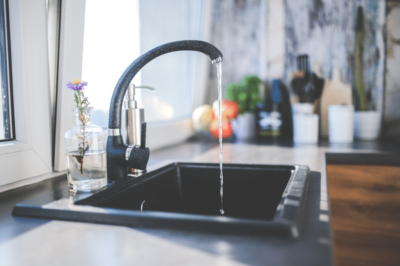


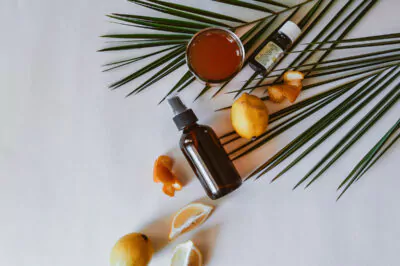

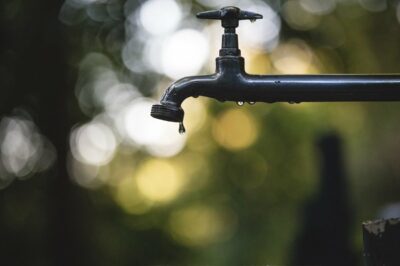
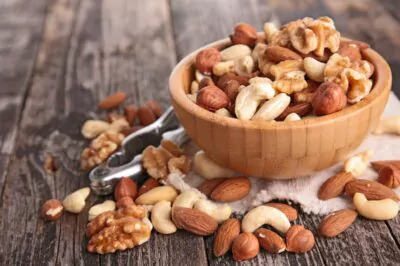
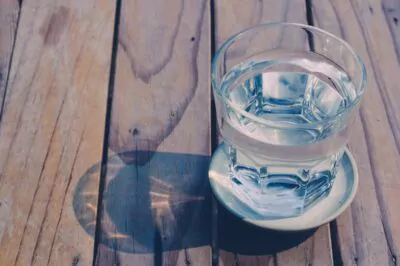
I didn’t know that there are about 22% of bottled water that still contain chemicals that go beyond the state health limits. That study was made by Natural Resources Defense Council. So where do we go from here? The tap water is not also safe. I agree that the best option is filtration. I personally believe that it would be best to buy the most dependable filter that you can find. Me personally, even though reverse osmosis is very expensive, I will go for it because it’s effective in removing contaminants.
Does anyone know anything about a Chemical Absorption Filter? A local supplier claims “it removes chemicals from your water without removing the natural minerals that your body needs.”
Thanks!
What about siatilled water, which takes out all the bad pesticides? Isn’t this even better for us?
Carmen Riedl
Did you mean to say “distilled” water? Distilled water might possibly be harmful if consumed on a regular basis, for both humans and other animals. Just search the Web on “dangers of drinking distilled water” and you’ll get lots of articles about the purported dangers of drinking distilled water, reverse osmosis filtered water, and purified water. There is some question and controversy, however, and differing opinions, so you should do your own research and make up your own mind. It may actually turn out to be not bad for you after all, but again you should check it out for yourself — for me, I’m erring on the side of caution, and am giving it a miss for now. 🙂
I am another Berkey user! We just got ours a couple of months ago after lots of research and testing the water from a friends filter. Even our 5 year old asks for water on a more regular basis. It simply tastes better and makes everything we make with water taste better. It was a bit of an investment but well worth it on so many levels.
Don’t forget the recent EPA fiasco in Colorado – which is still unsolved.
I use a Clearly Filtered Water pitcher. The pitcher is similar in size to a Brita large pitcher but filter is completely different and larger. I can taste the difference in my water that is filtered. I live in an apartment so I can’t put in a better water filtration system on sink. It is better to filter water nowadays.
We have a reverse osmosis filtration system under our kitchen sink which gives us awesome water to drink & cook with.
We also have a carbon filtration system in
Our basement that assures us clean water to bathe with:) what a difference they make in our lives.
LOVE LOVE LOVE my Berkey! Soooo easy. Tastes good. Can make clean drinking water out of swamp or pool water. Little maintenance. A chunk of money, but considering alternatives and quality, a great buy, and certainly less than buying bottled all the time!!! It will pay for itself quickly! Not affiliated with them in any way, just so happy with my purchase of about 4 yrs ago now.
Hi – I am currently using bottled water and want to think about getting away from that – does anyone have a Berkey system? If so, pros and cons – are there any other systems that you use that you feel are great and would recommend? Again, I am new to all of this so any help would be appreciated!
My house came with a reverse osmosis filter installed under the kitchen sink, and I used that for a while, but it was a real pain to change the filters, and also then I read about how reverse osmosis filtered water is not good for you, so then after much research, I bought a Berkey system and I liked it so much I got one for my brother, too. It is easy and it does definitely improve the water quality — the taste is better, and you know it’s much safer and cleaner. The only limitation I’ve found, however, is that it does not solve hard water problems. Where I live, we have very hard water, and unfortunately the Berkey does not change this. So, once I discovered this fact, I had to stop using the Berkey to filter my tap water, since hard water is not good to drink and can contribute to things like kidney stones (which I’ve had, twice now). Since then I have been buying bottled water, but now after seeing this article, I think I might resurrect my Berkey, and use it to filter the bottled water!! I can’t think of any safer choice, given my particular water situation.